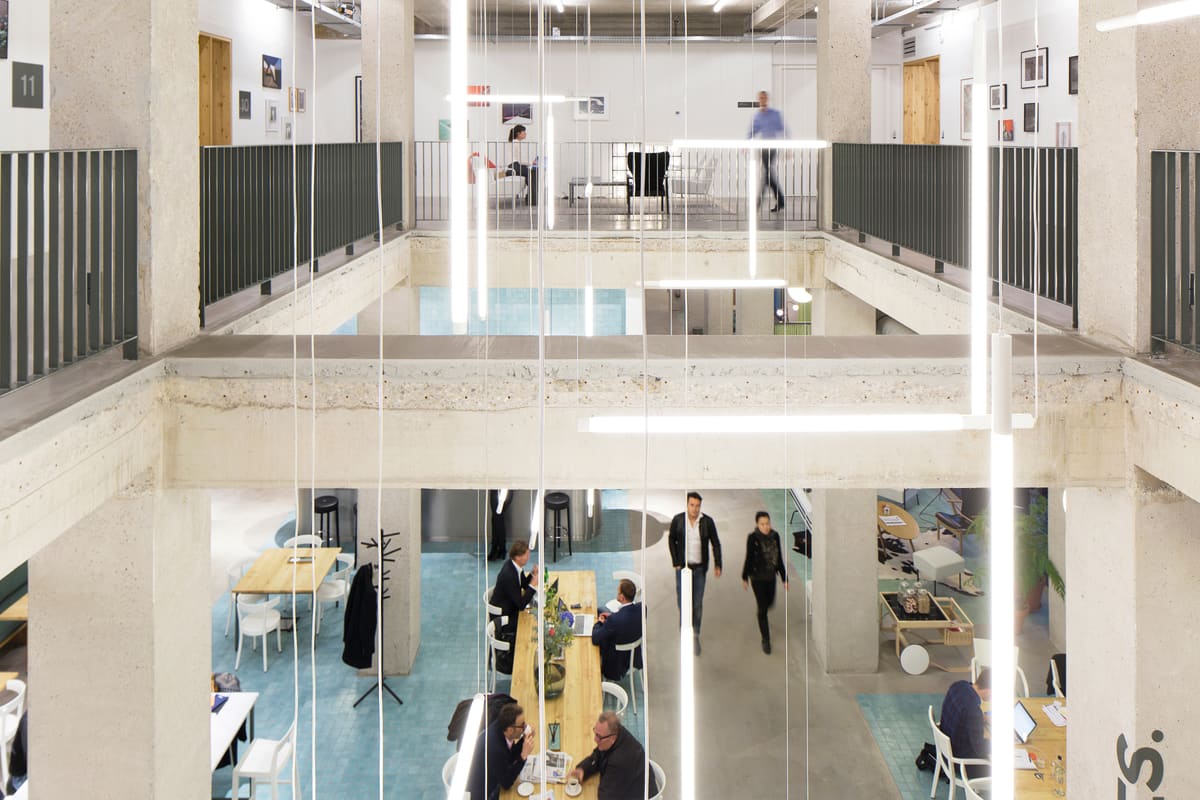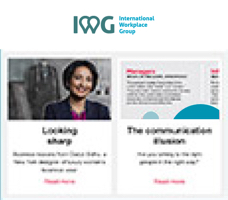In the wake of the pandemic, it’s clear that hybrid working can fast-track companies to their social, environmental and financial goals.
As lockdowns ease, Zoom-fatigued employees across a range of sectors are itching to get back to office life. But, for the majority, the aim is not a return to the 9-to-5, five-day routine they once knew.
People now crave the best of both worlds: 73% of workers want flexible remote work options to remain in place, but at the same time 67% pine for interpersonal camaraderie with their teams, according to Microsoft’s 2021 Work Trend Index.
This aligns with research that views the hybrid work trend from a C-Suite perspective. McKinsey recently solicited insights from 100 business leaders across various industries, concluding that, post-pandemic, “nine out of ten organisations will be combining remote and on-site working”.
Shaping the new world of work
Such findings are inspiring executives as they shape the new, hybrid workplace. Alphabet boss Sundar Pichai recently tweeted: “The future of work at Google is flexibility… we’re moving to a hybrid work week with most Googlers in the office approximately three days a week.” In April, PwC announced ‘the Deal’ – a bespoke flexible working solution that enables employees to set their own schedules, provided that 40-60% of their time is spent alongside colleagues at its offices or at client sites.
The hub-and-spoke model is already proving popular with businesses such as Standard Chartered and NTT, both of which have signed groundbreaking deals with IWG in the first half of 2021. This way of working recasts the corporate HQ as a destination (‘hub’) to which employees will travel for collaboration and creative meetings, rather than the base from which they should work every day. At other times, staff are free to base themselves at satellite offices (‘spokes’) closer to home. In the case of these firms, these are local IWG flexspaces.
According to IWG Founder and CEO Mark Dixon, the world has now woken up to the benefits of hybrid – and there’s no going back. “Employees have realised they’ve been wasting an hour or two commuting to an office that they don’t need to be in, while businesses have realised that a hybrid model not only means happier and more engaged employees, but also a significant saving for the triple bottom line,” he says.
So, just what are the social, environmental and economic benefits of embracing the hybrid shift?
Better for people
The Profit and Loss (P&L) balance may have been the main barometer of company wellbeing in the past, but the Covid-19 crisis has brought social issues to the fore.
“Over the past year, we’ve seen a marked increase in CEOs taking active positions on long-standing social issues which came into sharp relief during the pandemic,” says Jane Lawrie, Global Head of Corporate Affairs at KPMG. Results from KPMG’s CEO Outlook Pulse, based on survey responses from 500 CEOs in 11 key markets, indicate that 96% of CEOs feel their firm’s response to Covid-19 has shifted its focus to the social component of ESG (environmental, social and governance) themes – up from 63% in August 2020.
Approaches such as the hub-and-spoke model offer employers access to a wider, more diverse talent pool as workers no longer have to be tethered to specific locations. At the same time, hybrid models broaden opportunity, providing flexibility that supports the ambitions of workers with caring or childcare responsibilities (often women), as well as those with disabilities or long-term health conditions.
Furthermore, it’s no secret that happier, engaged employees are more productive. “Research shows that commuting is one of the least enjoyable activities that people have to do on a regular basis,” says Mark Dixon. Under hybrid, “Team members gain better mental health and reduced costs through not having to travel into city centres, along with greater career opportunities closer to home.”
Better for the planet
KPMG’s study also showed that 89% of CEOs want to lock in the sustainability and climate-change gains they’ve made during the pandemic. With young professionals increasingly inclined to work for greener firms, smart business leaders are tying the hybrid approach to their firms’ environmental goals. Cutting the need for commuting, or switching business trips to online interactions, can significantly reduce a company’s carbon footprint.
Firms aiming for net-zero emissions are particularly keen to quantify the decarbonising benefits of switching to hybrid. Software platform Watershed has devised a carbon calculator that assesses a spectrum of variables to help executives make decisions on the day-to-day running of their businesses. Such granular scrutiny could help to mitigate a company’s environmental impact – for instance, by helping HR directors split employees’ time between the HQ and local flexspaces, optimising the provision of resources.
Better for business
The advantages of hybrid working for employees spill over into business benefits, too. Happier employees are less likely to leave their jobs – and improvements in employee retention are known to be financially advantageous. Research from the Society for Human Resource Management suggests that every time a business replaces a salaried employee, it costs six-to-nine months’ pay.
Dixon also points to a study by EY, which shows that “companies can save about $11,000 for each employee that works in a hybrid manner.” Not only are cost savings promised by a reduction in staff turnover, having fewer people at HQ every day and cutting overheads accordingly can pay dividends.
The benefits of scaling back company real estate and instead opting for flexible workspaces are also increasingly clear. Jamie Dimon, JPMorgan Chase’s Chief Executive, expects that, for every 100 employees, the firm may ultimately need seats for only 60. Meanwhile, Lloyds Banking Group and HSBC have stated that their office space will shrink by 20 per cent and 40 per cent respectively. Flexspaces offer businesses the agility that many are searching for, post-pandemic: the option to scale floor space up or down at short notice, without the need for commitment to a costly, long-term lease.
Ultimately, Dixon says, the changes CEOs are seeing in post-pandemic working culture are “irreversible and accelerating fast. Herding people to the office is looking increasingly obsolete, expensive and inconvenient.”
But the future is bright, he insists, with the benefits of hybrid for the triple bottom line self-evident. “The future of work is already with us,” Dixon says. “And it’s only going to improve.”
IWG has been helping businesses like yours with corporate flexspace solutions for the last 30 years. Find out how we can support you today.






